Date released 1932 Category Serif | Classification Transitional | |
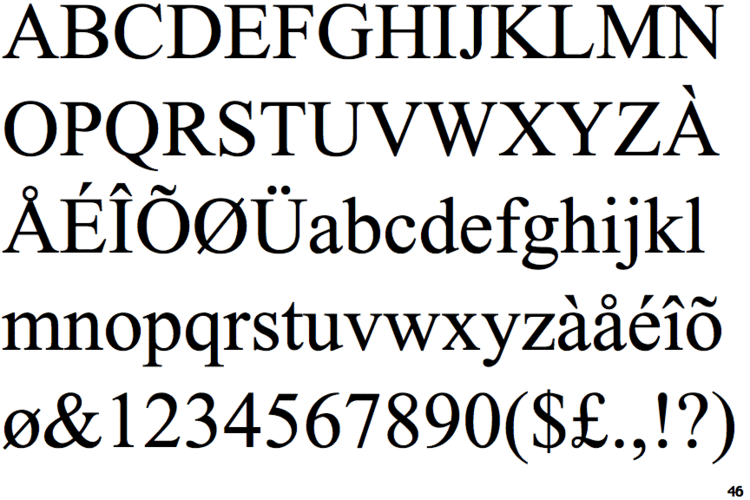 | ||
Link catalog.monotype.com/family/monotype/times-new-roman | ||
Times New Roman is a serif typeface commissioned by the British newspaper The Times in 1931 and designed by Stanley Morison, an advisor to the British branch of the printing equipment company Monotype, in collaboration with Victor Lardent, an artist in the Times' advertising department. Although no longer used by The Times, Times New Roman is still very common in book and general printing. Through distribution as a standard computer font, it has become one of the most widely used typefaces in history.
Contents
- Times new roman
- Design
- Development
- Early variants
- Bold weights
- Titling
- Times Hever Titling
- Times Wide 1938 series 427
- Series 727 and 827
- Claritas
- Usage
- Linotype releases
- Times New Roman
- Times New Roman World
- Linotype variants
- Other typefaces used by The Times
- Uses
- William Starling Burgess
- Designs inspired by Times New Roman
- Free alternatives
- Times 4 line Mathematics Series 569
- References
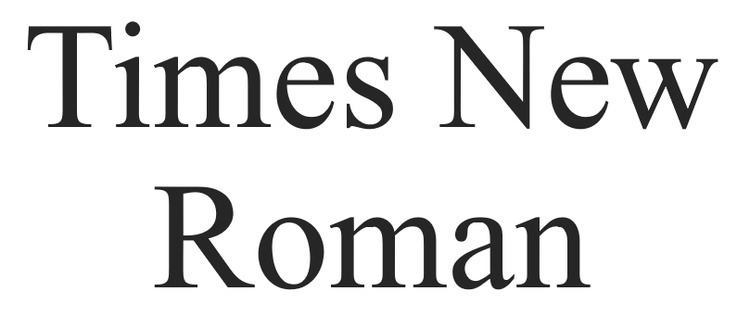
Times New Roman's creation took place through the influence of Stanley Morison of Monotype. Morison was an artistic director at Monotype, historian of printing and informal adviser to The Times, who recommended that they change typeface from the spindly and somewhat dated nineteenth-century Didone typeface previously used to a more robust, solid design, returning to traditions of printing from the eighteenth century and before. This matched a common trend in printing of the period.
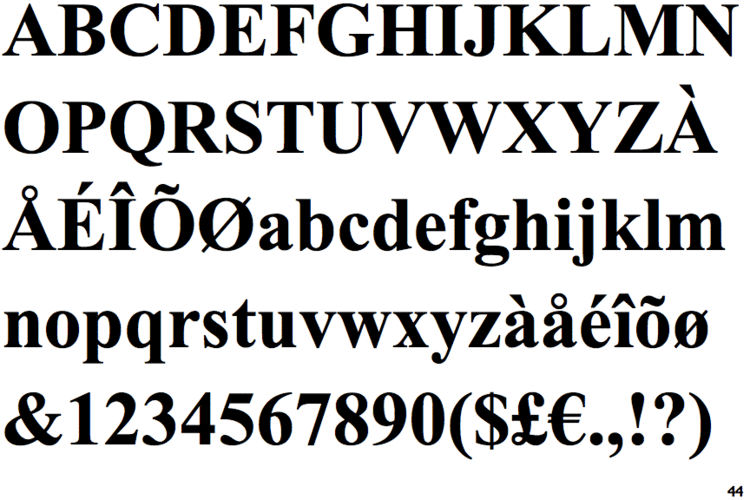
Morison proposed an older Monotype typeface named Plantin as a basis for the design, but revisions were made to increase legibility and economy of space. In particular, contrast between strokes was enhanced to give a crisper image. The new font was drawn by Victor Lardent, an artist from the advertising department of The Times, with Morison consulting, before refinement by the Monotype drawing office. The new design made its debut in The Times on 3 October 1932. After one year, the design was released for commercial sale. The Times stayed with Times New Roman for 40 years, but new production techniques and the format change from broadsheet to tabloid in 2004 have caused the newspaper to switch typeface five times from 1972 to 2007. However, all the new fonts have been variants of the original New Roman typeface. In commercial sale, Times New Roman became extremely successful, becoming Monotype's best-selling typeface of all in metal type. Although Morison did not literally draw the design, his influence on its concept was sufficient that he felt that he could take credit for it as "my one effort at designing a fount".
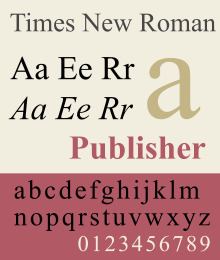
In Times New Roman's name, Roman is a reference to the regular style of a conventional serif font, or what is called its roman, the first part of the Times New Roman family to be designed. (The style is called Antiqua in some countries.) Roman type has some roots in Italian (and other European) printing of the late 15th and early 16th centuries, but Times New Roman's design has no connection to Rome or to the Romans.
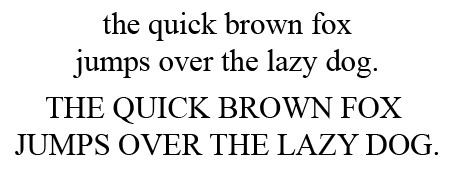
Times new roman
Design
Times New Roman has a robust colour on the page and influences of European early modern and Baroque printing. The design is slightly condensed, with short ascenders and descenders and a high x-height (tall lower-case letters), all effects that save space and increase clarity.
The ultimate origin of the 'Roman' (regular) style of Plantin and Times New Roman was a metal type created in the late sixteenth century by the French artisan Robert Granjon and preserved in the collection of the Plantin-Moretus Museum of Antwerp. This style is sometimes categorised as part of the old-style of serif fonts. Morison admired this style for its solid structure and clarity.
However, due to features such as its 'a' and 'e', with larger counters and apertures than in Granjon's design, its ball terminal detailing and an increased level of contrast between thick and thin strokes, it has also been compared to fonts from the late eighteenth century, the so-called 'transitional' genre, in particular the Baskerville typeface of the 1750s. Historian and sometime Monotype executive Allan Haley commented that compared to Plantin "serifs had been sharpened...contrast was increased and character curves were refined," while Lawson described Times's higher-contrast crispness as having "a sparkle [Plantin] never achieved." (The 'a' of Plantin was already not directly sourced from Granjon's work: the sheet from the Plantin-Moretus Museum used as a specimen for Monotype to use in designing Plantin had an 'a' from the wrong font.) Other changes from Plantin include a straight-sided 'M' and 'W' with three upper terminals not Plantin's four, both choices that move away from the old-style model.
Morison described the companion italic as also being influenced by the typefaces created by the Didot family in the late 18th and early 19th centuries: a "rationalistic italic that owed nothing to the tradition of the sixteenth or seventeenth centuries. It has, indeed, more in common with the eighteenth century." Morison himself told Harry Carter that the italic 'owes more to Didot than dogma'. (This is a reference to Morison's earlier theory, tried in the development of the Perpetua project, that a more muted oblique, which simply slants the letters without switching to more handwriting-like forms as a true italic does would make a better counterpart to regular type. Generally, however, italics are preferred in normal use for serif fonts, and in Times the italic is a reasonably conventional design.) Morison wrote in a personal letter of Times New Roman's mixed heritage that it "has the merit of not looking as if it had been designed by somebody in particular."
Rather than creating a companion boldface with letterforms similar to the roman style, Times New Roman's bold has a different character, with a more condensed and more upright effect caused by making the horizontal parts of curves consistently the thinnest lines of each letter, and making the top serifs of letters like 'd' purely horizontal. This effect is not found in sixteenth-century typefaces (which did not have bold versions); it is most associated with Didone type of the early nineteenth century and with the more recent 'Ionic' styles of type influenced by it that were offered by Linotype (discussed below), which were very dominant in contemporary newspaper printing.
Development
The development of Times New Roman was relatively involved due to the lack of a specific pre-existing model – or perhaps a surfeit of possible choices. Morison wrote in a memo that he hoped for a design that would have relatively sharp serifs, matching the general design of the Times' previous font, but on a darker and more traditional basic structure. Bulked-up versions of Monotype's pre-existing but rather dainty Baskerville and Perpetua typefaces were considered for a basis, and the Ionic designs from Linotype, such as Excelsior, that were popular in newspaper printing at the time, were also examined. (Perpetua, which Monotype had recently commissioned from sculptor Eric Gill at Morison's urging, is considered a 'transitional' design in aesthetic, although it does not revive any specific model.) Walter Tracy, who knew Lardent, suggested in the 1980s that "Morison did not begin with a clear vision of the ultimate type, but felt his way along."
Morison's biographer Nicolas Barker has written that Morison's memos of the time wavered over a variety of options (and in some cases seemed to propose several or a mixture) before it was ultimately concluded that Plantin formed the best basis for a condensed font that could nonetheless be made to fill out the full size of the letter space as far as possible. (Morison ultimately conceded that Perpetua, which had been his pet project, was 'too basically circular' to be practical to condense in an attractive way.)
Walter Tracy and James Moran, who discussed the design's creation with Lardent in the 1960s, found that Lardent himself had little memory of exactly what material Morison gave him as a specimen to use to design the typeface, but he told Moran that he remembered working on the design from archive photographs of vintage type, which Tracy suggests might have been the same specimen of type from the Plantin-Moretus Museum that Plantin had been based on, or a specimen of Plantin itself. The sharpened serifs somewhat recall Perpetua, although Morison's stated reason for them was to provide continuity with the previous Didone design and the crispness associated with the Times' printing; he also later cited reproduction after stereotyping as a reason for the choice.
During the project, Monotype and The Times examined research on legibility of type and carried out legibility tests on proof sheets. The design was refined extensively during the process of development by the Monotype drawing office team, and further changes were made after manufacturing began (the latter a difficult practice, since new punches and matrices had to be machined after each design change), and so obvious differences exist between Lardent's original drawings and the final release. Rhatigan has said that Lardent's originals show "the spirit of the final type, but not the details."
Morison continued to develop a close connection with the Times that would last throughout his life. Morison edited the History of the Times from 1935 to 1952, and in the post-war period, at a time when Monotype effectively stopped developing new typefaces due to pressures of austerity, took a post as editor of the Times Literary Supplement which he held from 1945 to 1948.
Early variants
A large number of variants of Times were cut. Walter Tracy in Letters of Credit, Allen Hutt and others have discussed these extensively in their works on the family.
Bold weights
An original part of the family was the bold weights. The bold of Times New Roman has a different style to the regular weight with a vertical axis and (given the greater weight) condensed in appearance than the regular weight. Some designers have found this unsatisfactory and too condensed, in particular Walter Tracy.
Titling
Monotype also created some caps-only 'titling' designs to match Times New Roman itself, which was intended for body text. While these are not sold by Monotype in digital format, Linotype's Times Eighteen in the same style (see below) remains available and could be used as a substitute.
Times Hever Titling
An elegant titling caps design, quite different to Times New Roman with a Caslon-style A (with a serif at top left of the letter, suggesting a stroke written with a quill) and old-style C and W; Tracy suggests Monotype's previous Poliphilus design as an influence. Named after Hever Castle, the home of the Times' owner Lord Astor. Designed early on, it was used by the Times for section headings. It has not been digitised.
Times Wide (1938, series 427)
A variant intended for book printing, avoiding the slight condensation of the original Times New Roman. Although it was popular in the metal type period for book printing, it was apparently never digitised.
Series 727 and 827
Monotype also produced Series 727, in which the heavier strokes of upper-case letters were made slightly thinner. This was done to produce a lighter effect in which capital letters do not stand out so much, and was particularly intended for German use, since in the German language capitals are far more common since they appear at the start of each noun. Series 827 modified some letters (notably the R) to correspond to their appearance in other typefaces popular in French printing. This production of what are now called stylistic alternates to suit national tastes was common at the time, and many alternates were also offered for Gill Sans for use in Europe.
Claritas
A modified 4¾ point size of Times Roman was produced by Monotype for use in printing matter requiring a very small size of type. Listed as Times Newspaper Smalls, available as either Series 333 or 335, it was also referred to by the name Claritas.
Usage
Times New Roman's popularity rapidly expanded beyond its original niche, becoming popular in book printing and general publishing. Monotype took advantage of this popularity by commissioning a widened version, Series 427, for book publishing, although many books ultimately used the original version.
An early use of Times New Roman outside its origin was by Daniel Berkeley Updike, an influential historian of printing with whom Morison carried an extensive correspondence. Impressed by the design, he used it to set his book Some Aspects of Printing, Old and New. It then was chosen by the Crowell-Collier magazines Woman's Home Companion and then its sister publications such as Collier's. A brochure was published to mark the change along with a letter from Morison hoping that the redesign would be a success.
Walter Tracy, who worked on a redesign, however noted that the design's compression and fine detail extending to the edge of the matrices was actually problematic in the aggressive conditions of most newspaper printing, in which the Times was unusual for its particularly high standard of printing suiting its luxury market. Users found that in the hot metal period it was common for the molten metal to rapidly eat through the matrices, and so it did not become popular among other newspapers: "Times Roman achieved its popularity chiefly in general printing, not in newspaper work." He described it as particularly used in "book work, especially non-fiction" such as the Encyclopaedia Britannica.
Linotype releases
Despite Monotype's key role in creating Times New Roman, its rival Linotype rapidly began to offer the design. The cross-licensing was required since the Times used Linotype equipment for much of its production. Linotype referred to the design as Times or Times Roman. Monotype and Linotype have since merged, but slight differences have split the lineage of Times into two subtly different designs.
Although Times New Roman and Times are very similar, various differences developed between the versions marketed by Linotype and Monotype when the master fonts were transferred from metal to photo and digital media. For example, Linotype has slanted serifs on the capital S, while Monotype's are vertical, and Linotype has an extra serif on the number 5. Most of these differences are invisible in body text at normal reading distances, or 10pts at 300 dpi. Subtle competition grew between the two foundries, as the proportions and details as well as the width metrics for their version of Times grew apart. Vivid differences between the two versions do occur in the lowercase z in the italic weight (Times Linotype has a curl also followed in the STIX revival, Times New Roman is straight) and in the percent sign in all weights. (Linotype and STIX have a stroke connecting up the left-hand zero with a slash, Times New Roman does not.)
Linotype licensed its version to Xerox and then Adobe and Apple, guaranteeing its importance in digital printing by making it one of the core fonts of the PostScript page description language. Microsoft's version of Times New Roman is licensed from Monotype, hence the original name. For compatibility, Monotype had to subtly redraw their design to match the widths from the Adobe/Linotype version. It has been reported to have lighter capitals that were originally developed for printing German (where all nouns begin with a capital letter). Versions of Times New Roman from Monotype exist which vary from the Linotype metrics (i.e. not the same as the version for Microsoft). In addition, the original digitisation of Times New Roman omits automatic ligature insertion, which the version of Times installed with OS X has. (This results in unsightly character collisions with the system version of Times New Roman whenever the characters 'fi' are needed.)
Linotype applied for registration of the trademark name Times Roman and received registration status in 1945. In the 1980s, there was an attempt by a group of entrepreneurs to seek from Rupert Murdoch, who owned The Times, the right to use the Times Roman name; separately, a legal action was also initiated to clarify the right of Monotype to use the name in the US despite Linotype's registration. As a result of legal action, Linotype and its licensees continued to use the name Times Roman, while Monotype and its licensees used the name Times New Roman.
Times New Roman
Monotype sells a wider range of styles and optical sizes than are offered with Windows, in order to meet the needs of newspapers and books which print at a range of text sizes. Its current release includes Regular, Medium, Semi Bold and Bold weights with matching italics, Extra Bold, Condensed (in regular, italic and bold), Seven (for smaller text, in regular, italic, bold and bold italic) and Small Text (for very small text, in regular, italic and bold). These versions include professional features such as small caps and text figures. Additional releases exist for different specific languages and character sets.
Times New Roman World
This is a version based on fonts released with Windows Vista. It includes fonts in WGL character sets, Hebrew and Arabic characters. Similar to Helvetica World, Arabic in italic fonts are in roman positions.
Linotype variants
Like Monotype, Linotype released additional versions of Times for different text sizes. These include:
Other typefaces used by The Times
From 1908 to 1932, The Times used a Didone serif font cut by Monotype, the same as or similar to Monotype Modern. The Times newspaper has commissioned various successors to Times New Roman:
During the Times New Roman period The Times also sometimes used Perpetua Titling, also from Monotype, and one of Morison's favourite type designs from his work at Monotype.
Uses
Times New Roman has been used for a wide range of newspapers around the world. In addition:
William Starling Burgess
In 1994 the printing historian Mike Parker published claims that the design of Times New Roman’s roman or regular style was based on a 1904 design of William Starling Burgess. This theory remains controversial. Parker and his friend Gerald Giampa, a Canadian printer, claimed that in 1904 Burgess created a type design for company documents at his shipyard in Marblehead, Massachusetts, and hired Lanston Monotype to issue it. However, Burgess abandoned the idea and Monotype shelved the sketches, ultimately reusing them as a basis for Times New Roman. Giampa claimed that he stumbled upon original material in 1987, after he had purchased Lanston Monotype. Giampa claimed that some of the papers that had been his evidence had been lost in a flood at his house, while Parker claimed that an additional source was material in a section of the Smithsonian now closed due to asbestos contamination. Giampa asked Parker to complete the type from the limited number of surviving letters, which was issued in June 2009 by Font Bureau under the name of 'Starling'.
Reception to the claims was sceptical with dismissal from Morison's biographer Nicolas Barker and Luc Devroye among others; Barker suggested that the material had been fabricated in order to aid Giampa in embarrassing Monotype's British branch, while Devroye suggested that the claim had begun as a prank. Monotype executive Dan Rhatigan described the theory as implausible in 2011: "I'll admit that I tend to side with the more fully documented (both in general, and in agreement with what little I can find within Monotype to support it) notion that Times New Roman was based on Plantin...I won't rule out the possibility that Starling Burgess drew up the concept first, but Occam's razor makes me doubt it."
The Times Online web site credits the design to "Stanley Morrison, Victor Lardent and perhaps Starling Burgess".
Designs inspired by Times New Roman
Because of its popularity, the typeface has been influential in the subsequent development of a number of serif typefaces both before and after the start of the digital-font era.
Free alternatives
Times Roman and Times New Roman are proprietary fonts. There are some free software metric-compatible fonts used as free Times Roman and Times New Roman alternatives or used for font substitution:
Times 4-line Mathematics Series 569
This is a variant designed for printing mathematical formulae, using the 4‑line system for mathematics developed by Monotype in 1957. This modified version of Times Roman was designed for use as part of Monotype's 4-line Mathematics system. The major changes to the Times Roman typeface itself were a reduction in the slope of italic characters to 12 degrees from 16 degrees, so as to reduce the need for kerning, and a change in the form of italic v and w so that italic v could be more easily distinguished from a Greek nu.
The 4-line system involved casting characters for 10-point Times Roman on 6-point bodies. The top of the character would overhang the slug, forming a kern which was less fragile than the normal kerns of foundry type, as it was on a slab of cast metal. This technique had been in previous use on Monotype machines, usually involving double-height matrices, to allow the automatic setting of "advertising figures" (numbers that occupy two or more lines, usually to clearly indicate a price in an advertisement set in small type). This meant that the same matrix could be used for both superscript and subscript numbers. More importantly, it allowed a variable or other item to have both a superscript and a subscript at the same time, one above the other, without inordinate difficulty.
Previously, while the Monotype system, due to its flexibility, was widely used for setting mathematical formulas, the typeface Modern Series 7 was usually used for this purpose. Because of the popularity of Times Roman at the time, Monotype chose to design a variant of Times Roman suited to mathematical composition, and recut many additional characters needed for mathematics, including special symbols as well as Greek and Fraktur alphabets, to accompany the system instead of designing it around the typeface that was being used, for which characters were already available. Matrices for some 700 characters were available as part of Times Roman Series 569 when it was released in 1958, with new characters constantly being added for over a decade afterwards (thus, in 1971, 8,000 characters were included, and new ones were being added at a rate of about 5 per week).
